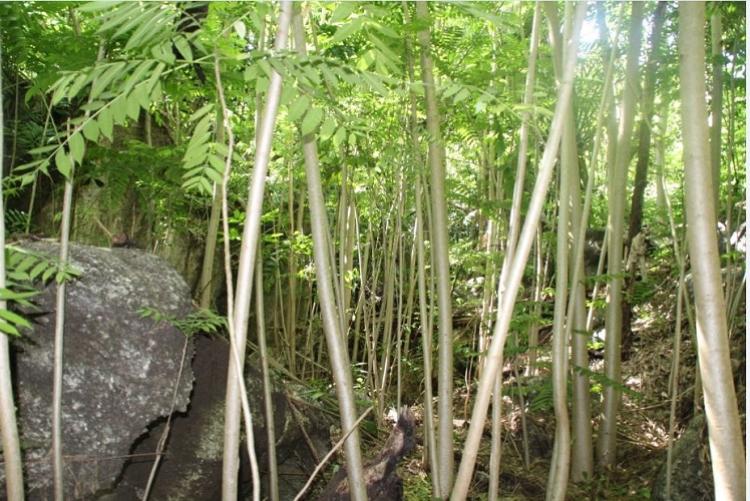The small, diurnal dwarf gecko, Lygodactylus williamsi is endemic to Kimboza Forest Reserve in Morogoro Tanzania. The species is territorial and exclusively dwell on plant species Pandanus rabaiensis.

Cedrela odorata
Over the past few years the population of L. williamsi has undergone a sharp decline. It is estimated that about 15% of the species were illegally collected for pet trade between 2004 and 2009.
Habitat loss is another threat. L. williamsi occupancy has shrunk to only 8km2 prompting its categorization as Critically Endangered by IUCN Red List.
Casual surveys show that alien invasive tree species Cedrela odorata is expanding rapidly into the forest and potentially replacing native tree species. Qualitative analysis suggests that dominance of C.odorata could negatively affect the population of L. williamsi but the opposite may also be true.
This project seeks to understand the impacts of alien invasive tree species C. odorata on population of endemic and critically endangered lizard species L. williamsi at Kimboza Forest Reserve in Morogoro, Tanzania.
Specifically, we wanted to know the degree through which the C. odorata has advanced into P. rabaiensi, the drivers and direction of invasion, the rate of habitat loss and change in population of L. williamsi due to these invasions.
Systematic Forest Survey in combination with Geographic Information System (GIS) techniques was used to assess the spatial distribution of C. odorata at Kimboza Forest Reserve. The population of L.williamsi was determined through Visual Encounter technique.
History of Cedrela odorata at Kimboza Forest Reserve
Cedrela odorata was introduced to Kimboza Forest Reserve in two phases. Trial phase involved planting the tree species in one plot of 2 ha in 1957 and establishment phase followed in 1960, whereby 6 ha of Cedrela were planted with the aim of recruiting fast growing tree species for timber and firewood.
The extent of invasion of Cedrela odorata into Pandanus rabaiensis vegetation
Systematic survey revealed that Cedrela covers 35% while Pandanus covers 15% of all tree species with diameter >10 cm. Except, few thick stands of Pandanus, Cedrela was found almost every vegetation type.
“We found a very strong negative correlation between abundancies of Cedrela and Pandanus suggesting that Cedrela could be suppressing /replacing Pandanus. However, other hypothesis could be that the two species are resisting each other”
Local communities perception on spread and impacts of Cedrela odorata on biodiversity
Local community perceived that Cedrela odorata was spreading at a very high rate within the forest reserve, public lands and settlements. They claimed that the tree species produce many viable seeds, twice a year.
The seeds are light and winged mainly dispersed by wind, water and birds. The seeds are distributed almost everywhere during dry season and would germinate profusely after the rain. Local community perceive Cedrela as a threat to the biodiversity of forest reserve. They claimed that the exotic species was replacing the indigenous fruit and medicinal tree species
This project has created and raised awareness about the presence and value of the Kimboza forest reserve to the local community, national and international level.
This project was implemented at Kimboza Forest Reserve in Morogoro Region, Tanzania (7°2′S 37°47′E). This 4.05 km2, lowland deciduous tropical forest is a transitional forest between coastal and Eastern Arc Mountain forests. It is the only remaining lowland forest that was once part of Uluguru Mountain Forest. It has 364 vascular plant species, 79 birds, 25 reptiles, 25 amphibians and 20 reptile species and is considered to be one of the most diverse lowland forests on Earth.
Watch a short video documentary showing the history of the forest reserve, potentials and threats. The video is in Kiswahili with English sub-tittles.
For further information, Contact
Project leader: Dr. Charles J. Kilawe
E-mail: ckilawe@suanet.ac.tz
Project Update : http://www.rufford.org/projects/charles_kilawe




